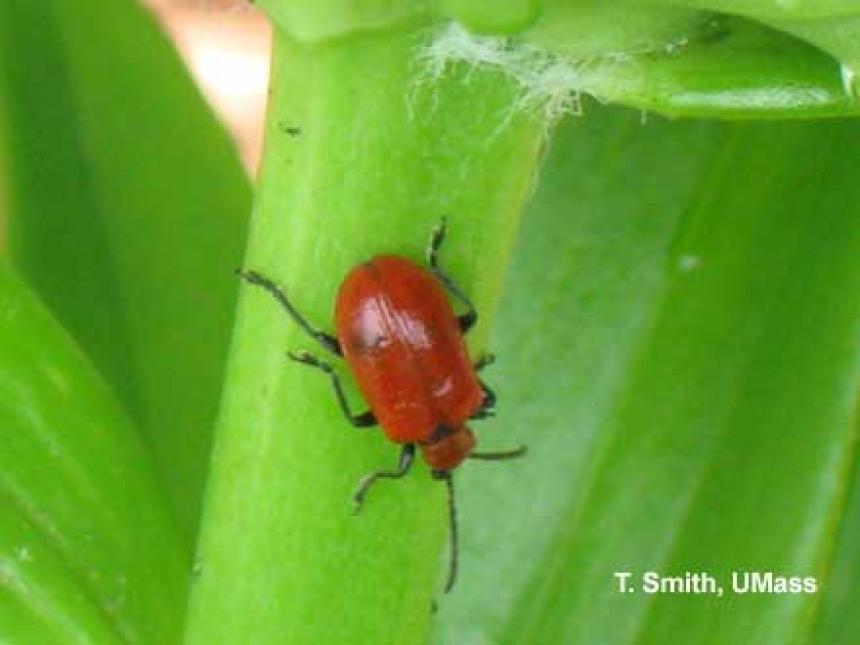As soon as lilies break through the ground, over-wintered, bright red adult lily leaf beetles will begin to actively feed on the foliage. The beetles are foraging for food and seeking a mate. The adult beetles will begin to lay eggs on the undersides of leaves, usually in May. The eggs are irregular-shaped and laid in rows that appear as tan-colored lines. Just before the eggs hatch, they will turn orange and then a deep red color. The eggs hatch within 4-8 days into the immature or larval stage. The larvae are slug-like in appearance with soft, plump orange, brown, yellowish or even greenish bodies and black heads. The young larvae initially feed on the undersides of the foliage but eventually will move to the upper surfaces and the buds. While they feed, the larvae pile their own excrement on their backs which makes them objectionable to hand-pick. The larval feeding is the most destructive and lasts for 16-24 days. The larvae then drop to the soil to pupate. The pupae are florescent orange. Adult beetles emerge 16-22 days later and can be seen feeding throughout the rest of the growing season. Adult beetles over-winter in sheltered places, soil or plant debris in the garden or woods, not necessarily near the host plants.
Lily leaf beetle (Lilioceris lilii) is known to lay its eggs and develop only on true lilies, Lilium species (Turk's cap lilies, tiger lilies, Easter lilies, Asiatic and Oriental lilies) (not daylilies), and fritillaria (Fritillaria sp). Although lilies and fritillaria are the primary hosts, lily leaf beetle also feeds, sometimes just lightly, on a number of other plants, including lily of the valley (Convallaria majalis), soloman's seal (Polygonatum sp.), bittersweet (Solanum sp.), potato (Solanum tuberosum), hollyhock (Alcea) and various hosta species. It is however, a devastating pest to true lilies.
Management: For only a few plants in the garden, hand-picking adults and eggs can be effective. For more than a few susceptible plants, pesticide treatments may be needed.
For more information see the fact sheet: Lily Leaf Beetles
